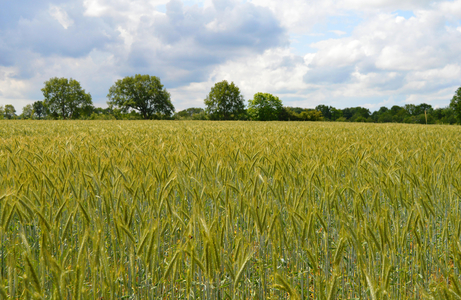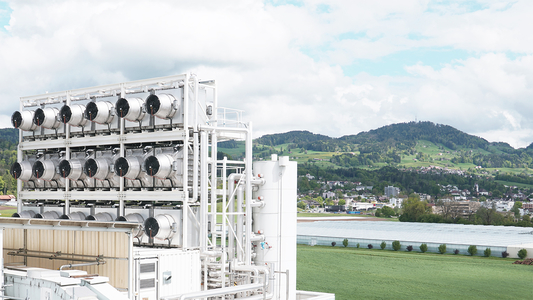New analysis outlines national opportunities to remove CO2 at the gigaton scale
 (Download Image)
(Download Image)
“Roads to Removal: Options for Carbon Dioxide Removal in the United States,” charts a path for the United States to achieve a net-zero greenhouse gas (GHG) economy by 2050, helping to ensure the nation’s climate security and resilience by cleaning up Earth’s atmosphere and addressing the root cause of climate change.
Lawrence Livermore National Laboratory (LLNL) researchers, along with scientists from more than a dozen institutions, have completed a first-of-its-kind high-resolution assessment of carbon dioxide (CO2) removal (CDR) in the United States. The report, “Roads to Removal: Options for Carbon Dioxide Removal in the United States,” charts a path for the United States to achieve a net-zero greenhouse gas (GHG) economy by 2050, helping to ensure the nation’s climate security and resilience by cleaning up Earth’s atmosphere and addressing the root cause of climate change. It also includes an integrated analysis of CDR techniques and resources that are currently available, along with the costs that will be incurred on the path to net-zero.
In 2022, the United States government established a 2050 goal to reach net-zero emissions by decarbonizing our economy, removing CO2 from the atmosphere and storing it at the gigaton scale (at least a billion tons per year). Roads to Removal lays out a road map to this goal and answers the question: How much CO2 is it possible to remove in the United States and at what cost?
The report concludes that with today’s technologies, removing 1 billion metric tons of CO2 per year will annually cost roughly $130 billion in 2050, or about 0.5% of current GDP. This will require increasing the uptake of carbon in forests and in working agricultural lands, converting waste biomass into fuels and CO2 and using purpose-built machines to remove CO2 directly from the air. This ensemble of lowest-cost approaches for CO2 removal would create more than 440,000 long-term jobs and can be achieved using renewable energy sources, with currently available land and below ground geologic storage. The granular analysis provided in the Roads to Removal report gives decision makers across the United States a lens for location-specific opportunities, enabling them to make decisions that best fit the places they call home.
Unique approach delivers reliable cost and impact estimates
The report provides a supply analysis built from measurements of economic feasibility and CDR technical potential with the highest-resolution data available. Unlike previous analyses, which used integrated assessment or top-down models, the methods used in Roads to Removal rely on bottom-up calculations, and use the most current estimates for resource demands, costs and impacts of potential CO2 removal approaches by county.
Roads to Removal identifies specific opportunities by location for soil and forest management, biomass conversion and direct air capture (DAC) technologies, as well as geological resources. It provides information on various CDR transportation pathways, as well as crosscutting regional and environmental justice considerations. These analyses will be useful for weighing alternatives and local benefits for specific CDR projects.
The report examines the breadth of strategies where it was possible to make reliable estimates of what it will take to apply them, from land management to the latest technological options. The cost of every step of the solution was evaluated, from collecting waste biomass, to transporting CO2, to storing CO2 deep underground. The analysis enables interested counties, states, community stakeholders and CDR practitioners to work together to decide where, when and how much of each approach fits into their local needs.
“Roads to Removal enables local, informed decision-making and shows us that we can prevail in our quest to reverse climate pollution,” said LLNL scientist Jennifer Pett-Ridge, the report’s lead author. “Every geographical region has a unique story, as well as an opportunity to help take enough CO2 out of the air and meet our net-zero emissions goal by 2050.”
The report was jointly commissioned by the U.S. Department of Energy’s (DOE’s) Office of Energy Efficiency and Renewable Energy (EERE), Bioenergy Technologies (BETO), Advanced Research Projects Agency – Energy (ARPA-E) and Office of Fossil Energy and Carbon Management (FECM), with additional support from the ClimateWorks Foundation. The goal of this two-year undertaking was to help ensure the nation’s climate security and resilience while addressing one of the global challenges of our time.
“This report shows that to achieve the billion-ton scale of carbon dioxide removal needed by 2050 to achieve net-zero goals, the United States must use all removal methods available – oceans, forests, cropland soils, biomass and minerals and chemicals through direct air capture – to make it happen,” said Jennifer Wilcox, principal deputy assistant secretary for Fossil Energy and Carbon Management at DOE. “The Roads to Removal report is a critical tool that climate practitioners can now use to better understand the key factors and pathways involved in removing CO2 from the air at the scale necessary to meet our national commitments.”
Options for both immediate and long-term CDR with an equity focus
The Roads to Removal report evaluates CDR feasibility and capacity, ecological effects, populations involved, infrastructure and costs for all 3,143 counties across the United States. Significant opportunities exist in forest and cropland soil management, biomass carbon removal, direct air capture and geological storage. Unique to Roads to Removal are new energy, equity and environmental justice (EEEJ) optimization indices designed to help identify counties with the greatest opportunities for co-benefits and minimal risks.
The findings highlight opportunities for both immediate action and long-term investment. By taking CO2 out of the air, the United States can create more than 440,000 new jobs, improve air and water quality and reduce the severity of some damaging impacts of greenhouse gases on our climate.
“Community consideration is paramount to the scalability of CDR; when residents are excited about projects, they are much more likely to get off the ground in a timely and affordable fashion,” said LLNL scientist and co-author Kim Mayfield. “In this report, we identify highly vulnerable counties that could maximally benefit from CDR management approaches in forests and agricultural soils. We also identify counties experiencing inequitable job losses in traditional energy sectors; these counties may become early adopters of innovative CDR approaches such as biomass for carbon removal and storage (BiCRS) and direct air capture (DAC), which can put underemployed, skilled residents back to work.”
One report, many pathways
Roads to Removal examines land-based CDR methods that could be expected to remove at least 10 million tons of CO2 equivalents per year.
“Effective forest management can change the CDR conversation,” said co-author Sara Kuebbing, a research scientist at the Yale School of the Environment. “Our forests are both a sink and a source of CO2; essentially our green infrastructure. But they are in trouble, and we must act now.”
“In agricultural soils, CDR solutions can be implemented immediately and also can benefit food production and wildlife habitat,” said LLNL scientist and co-author Allegra Mayer. “This includes investments in planting cover crops, perennial carbon crops and perennial field borders. The land management options represent a prime opportunity for near-term, soil-based CO2 removal while we invest in some of the long-term, technology-driven CDR solutions.”
Near-term ecological CDR solutions in forests and soils can be complemented by longer-term investment in CO2 removal technologies like biomass conversion and DAC that can lead to durable storage of CO2 in deep geological formations.
In the area of BiCRS, more than 27 processing pathways were evaluated, including opportunities to produce energy sources such as H2 or long-lived carbon products from municipal wastes and agricultural or forest residues.
“We focused on the top five pathways with the recognition that removal requires strong stakeholder coordination, land use considerations and the potential for revenue generation,” said Sarah Baker, co-author and LLNL scientist.
To get all the way to net-zero, investment in CO2 removal technologies like direct air capture with geologic storage (DACS) will eventually be necessary.
“Our nation can use DACS to remove enough CO2 to help compensate for greenhouse gas emissions that cannot be cost-effectively mitigated,” said Simon Pang, LLNL scientist and co-author. “But direct air capture will require additional investment in research, development and deployment.”
Do our best, remove the rest
In the immediate future, the United States and all developed nations must work to rapidly decarbonize industrial sectors, deploy renewable energy, implement near-term CDR solutions and invest in longer-term BiCRS and DACS opportunities.
The CO2 captured via BiCRS or DACS will need to be durably stored below ground. Roads to Removal suggests that more than half of the land area in the nation has the potential for safe CO2 geological storage.
“This report opens more opportunities to explore for storage in deep geologic formations that can accept and store large volumes of captured CO2,” said Susan Hovorka, University of Texas at Austin’s Bureau of Economic Geology researcher and Roads to Removal co-author.
The report also identified where land, renewable energy and water resources exist. “We know it will be important to carefully consider where carbon dioxide removal is deployed, particularly when it comes to direct air capture and biomass-based strategies. The bottom line is that it is possible to scale up carbon dioxide removal while avoiding competition with other national priorities, provided we make the necessary infrastructure investments,” said Lawrence Berkeley National Laboratory staff scientist and co-author Corinne Scown.
“Community engagement, capacity building and education is critical to the informed decision making we need to implement national-scale CDR removal and achieve net-zero emissions by 2050,” Pett-Ridge said. “Roads to Removal is a first-of-its kind resource and assessment tool, designed to help key community stakeholders and government leaders reach that goal.”
Collaborating institutions on Roads to Removal include Oak Ridge National Laboratory, Lawrence Berkeley National Laboratory, University of Texas at Austin’s Bureau of Economic Geology, North Carolina State University, University of California—Berkeley, Colorado State University, Indiana University, Yale University, University of New Hampshire, Iowa State University, Michigan State University and University of Pennsylvania.
The Roads to Removal report, along with fact sheets, maps, videos and a complete author list, is available at Roads2Removal, a public service website launched by the Livermore Lab Foundation and Climate Now, with funding support from Breakthrough Energy, ClimateWorks Foundation and the Grantham Foundation for the Protection of the Environment. In 2024, Roads to Removal authors will host a series of community stakeholder symposia to share report specifics and discuss the CDR opportunities unique to each region. Dates and locations of these free symposia can be found at Roads2Removal.
Contact
 Anne M. Stark
Anne M. Stark
[email protected]
(925) 422-9799
Related Links
Roads2RemovalLivermore Lab Foundation
Office of Energy Efficiency and Renewable Energy
Bioenergy Technologies
Advanced Research Projects Agency – Energy
Office of Fossil Energy and Carbon Management
ClimateWorks Foundation
Tags
Earth and Atmospheric ScienceClimate
Energy
Global Security
Physical and Life Sciences
Community Outreach
Government
Industry Collaborations
Atmospheric, Earth, and Energy
Climate change
Climate science
Materials Science
Nuclear and Chemical Sciences
Featured Articles











